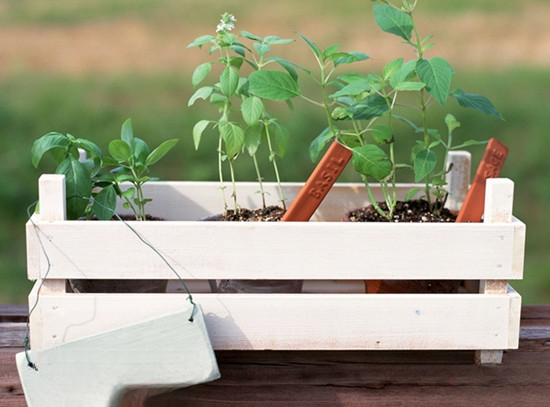Gardening tips are here to popularize home gardening knowledge!
Horticulture, or garden cultivation, encompasses the cultivation, propagation, and production methods of fruit trees, vegetables, and ornamental plants. It can be categorized as fruit tree gardening, vegetable gardening, and ornamental gardening. The term "horticulture" originally referred to plant cultivation within fenced enclosures. While modern horticulture has long since transcended this limitation, it remains a more intensive cultivation method than other crop cultivation practices. Horticulture is a component of the crop cultivation sector within agriculture. Horticultural production plays a significant role in enriching human nutrition and beautifying and transforming the human environment.

Types of horticultural crops:
1. Fruit trees
Fruit trees are perennial and mainly woody plants that provide edible fruits and include deciduous fruit trees, evergreen fruit trees, vines and shrubs, and a small number of perennial herbaceous plants.
2. Vegetables
Vegetables are mainly one- or two-year-old herbs. They are not limited to fruits, but also include roots, stems, leaves and flowers. Therefore, they can be divided into fruit vegetables, root vegetables, stem vegetables, leafy vegetables and cauliflowers; in addition, they also include a small number of perennial herbs and woody vegetables as well as fungi and algae.
3. Ornamental plants
Ornamental plants include one- or two-year-old, perennial or bulbous flowers, as well as shrubs, trees and other flowers and trees, which can provide people with aesthetic enjoyment and be used to prevent pollution and improve the environment.
Gardening forms
1. Growing flowers
Flowers symbolize happiness, beauty, auspiciousness, and friendship. They are the essence of nature and beautify people's lives. Throughout history, both in China and abroad, flowers have been associated with garden architecture, home decoration, historical texts, poetry, and paintings. Potted flowers are flexible and easy to manage, making them particularly suitable for home cultivation. With so many different flower varieties, choosing the right ones for your needs is a crucial consideration from the outset. Choosing flowers requires clarifying your preferences, and you can also choose flowers based on your health needs. For example, jasmine can calm, relieve fatigue, and promote sleep. Placing two jasmine pots in your bedroom can alleviate insomnia. The fragrance of jasmine can soothe and soothe depression, enhancing mood. The delicate scent of lotus and rose can prevent the onset of coronary heart disease. The aroma of gardenia can clear the liver and promote bile secretion, preventing and treating hepatitis and cholecystitis.
2. Flower Arrangement
Flower arrangement is a profound art form that not only delights the eye, beautifies the home, and enriches daily life, but also soothes the mind, cultivates the spirit, and brings a sense of joy and warmth. The art of flower arrangement originates from nature, transcends nature, and integrates nature, art, literature, history, and intellectual interest. It is increasingly becoming a professional skill that symbolizes civilization and lifestyle. Home flower arrangement can be divided into living room flower arrangement and bedroom flower arrangement based on placement. Living room flower arrangements are warm and peaceful, requiring vibrant colors and a rich, full, and full appearance. Bedroom flower arrangements should avoid overly bright colors and instead focus on light colors, emphasizing simplicity, simplicity, and elegance. Fragrance is particularly beneficial. Furthermore, flower arrangement emphasizes sentiment, and an appropriate, subtle, and creative name can add the finishing touch to the entire arrangement process.
3. Bonsai making
Bonsai are living, breathing works of art. As the seasons change, they reveal the pure, beautiful charm of nature, inspiring poetry and painting, and generating beautiful fantasies, making us feel that life stems from the power of nature. Only by mastering the fundamentals of bonsai can one achieve the ever-changing art of flower arrangement. Only by exploring the purpose and application of the entire design, mastering the atmosphere and creating in harmony with the environment, achieving the design goal through its connotation and charm, and ensuring that the arrangement of flowers and trees is adapted to the local conditions and that the flowers and containers integrate into the theme, can a work be considered perfect.
Gardening Design Guide
1. Clarify the function of the garden
At the beginning of the design, there should be a clear positioning of the function of the garden, is it a shelter for wild animals, or a garden full of vegetables? If you want the garden to have multiple functions, then first determine its most important function and then design it.
2. Satisfy the sensory needs of the garden
When creating the landscape, pay attention to matching the most harmonious colors to satisfy the visual sense; choose fragrant plants to satisfy the sense of smell; the garden has crisp bird songs, the gurgling sound of water accompanied by children's laughter to satisfy the hearing; soft, smooth, and hard walkways, and fences of various materials to satisfy our sense of touch.
3. Positioning the garden design style
Do you want visitors to appreciate a neatly planned garden? Or a garden with an oriental mysterious atmosphere? Is it a garden with dense shade from trees or sparse and open space? List all you can think of on paper and choose the one you like most.
4. Make garden plant selections
Plants are crucial to creating a unique garden. With so many varieties to choose from, including perennials, dwarfs, and edibles, consider the right mix, climate, planting area, and budget. With professional gardening, your garden will be a truly captivating sight.
5. Carefully select garden pieces
Decorative accessories are the most important part of a garden, and a small garden ornament can often be the finishing touch. Common garden ornaments include pottery, ceramics, beautiful vases and flower pots, and carefully arranged rain flower stones.